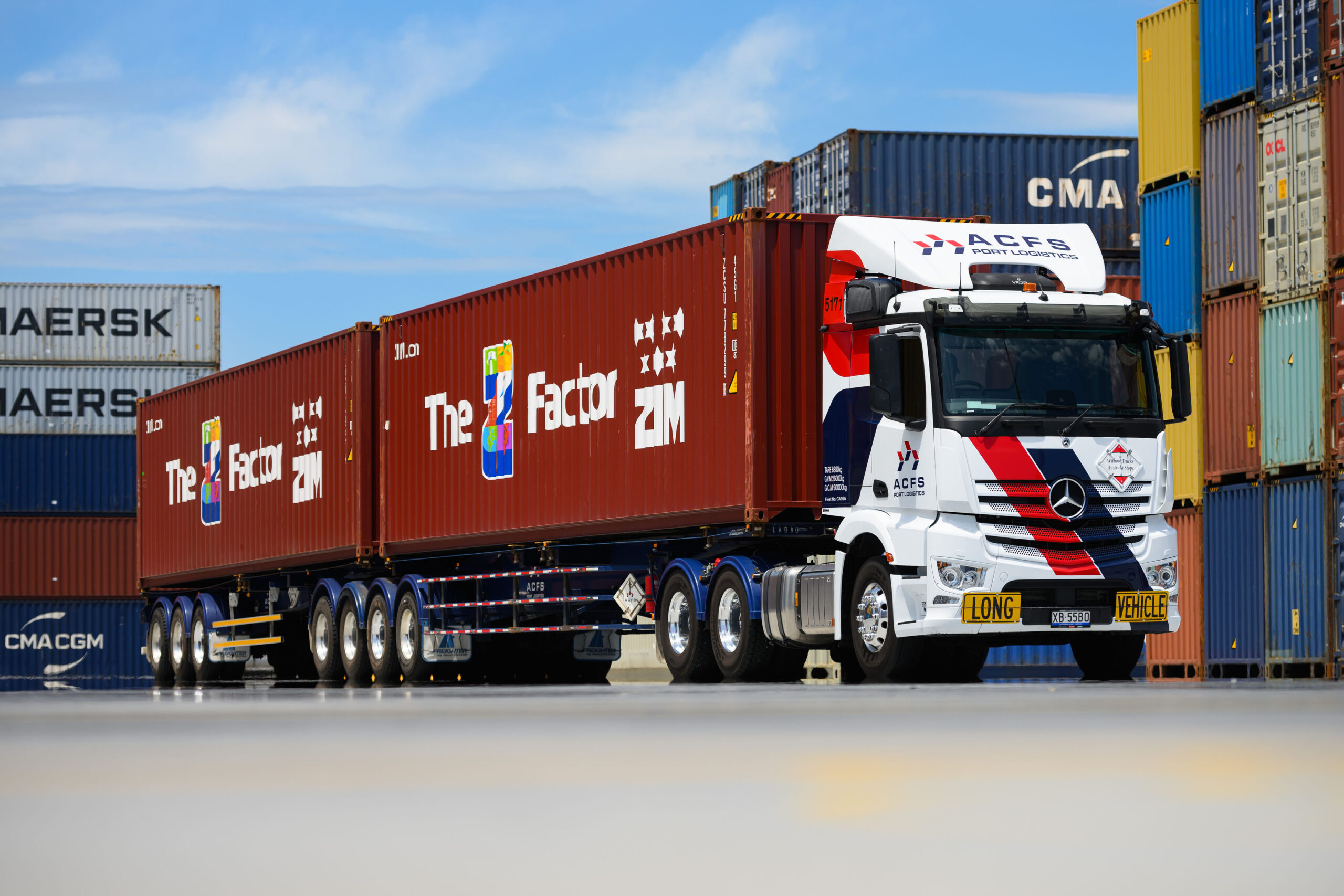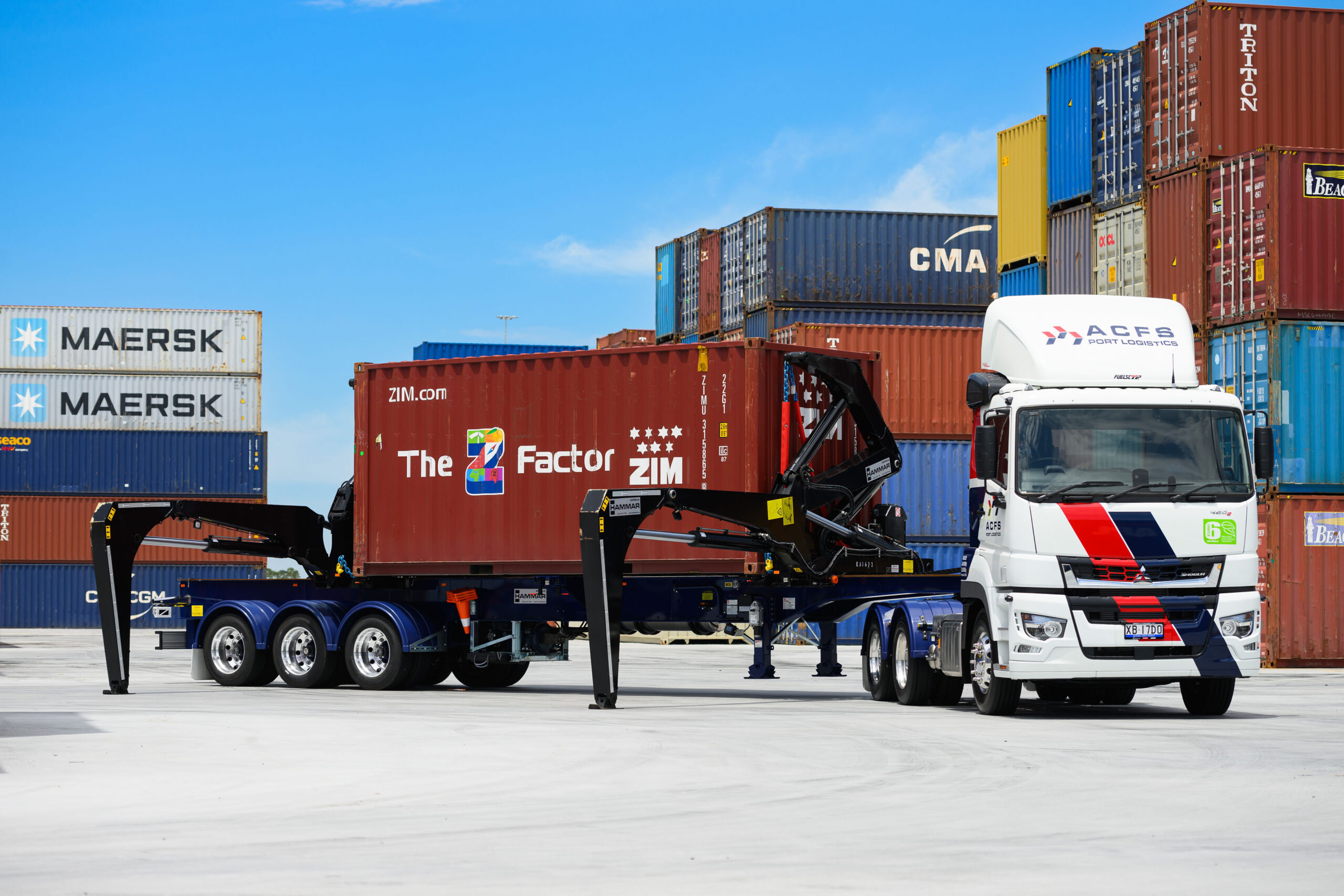
Road Transport - Container, Tautliner, and Bulk
Network of strategically based sites located on port (within 1km of container terminals) and off-port (within 15kms of capital city industrial zones) in all major capital cities across Australia. All sites are connected to the Port by High Productivity Vehicles (HPV’s – carting 4 TEU per trip) and Rail (metro and regional), allowing us to provide logistical solutions that are highly efficient and economical.
300+ Trucks
and 1,200+ trailers
>1 million m2
strategically located facilities nationwide
850k+ TEU
handled of fully laden imports and exports per annum

ACFS fleet is designed to maximise TEU, weight and cube and our R&D Team are constantly investing in developing tailor made solutions based on customer demands

ACFS operational structure and fleet capability has in-built levers to scale up to seasonality based demands and accommodate a peak surge without any disruption to service

ACFS have partnered with Salesforce, MuleSoft and Containerchain to allow our Customer Service Officers the ability to track and trace every movement, with live updates on the current location of your container, from Container Terminal to Empty Container Depots (and vice versa). We invest in system to system integration upon customer on-boarding, allowing for the automation of administrative tasks, therefore improving our teams ability to enhance our service ability to our customers.

- All trucks are purchased NEW from the factory and locally maintained in each state by ACFS, ensuring the highest quality and safety standards are met across Australia.
- MT Data is our chosen technology provider to manage every facet of compliance in the vehicle. Black boxes, and tablets fitted to every vehicle ensures drivers, trucks, and trailers are in perfect synchronisation with each other.
- Truck cabins are fitted with a tablet, black box and DVR (dashcam) system. The black box measures the relative health and performance of the truck whilst the tablet ensures pre-start checklists, fatigue, and job data are all managed collectively. The DVR (dashcam) system allows for recording and viewing of video footage from four points of view (2x on the mirrors, 1x facing forward, and 1x facing the driver).